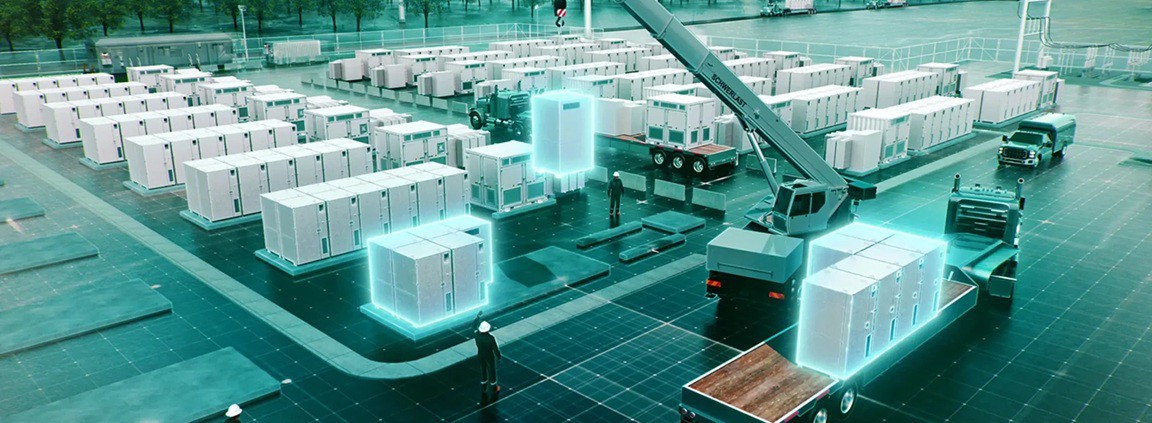Solar Energy with Battery Storage: Types of Energy Storage Systems
In the global shift toward clean energy, solar power has emerged as a leading force, offering a renewable and abundant energy source. Yet solar energy’s full potential can only be realized when paired with reliable energy storage. This article explores the major types of energy storage systems, with a particular focus on how solar energy integrates into residential and commercial applications.
What Is Solar Energy with Battery Storage?
Solar energy with battery storage refers to systems that pair photovoltaic (PV) panels with energy storage devices—typically lithium-ion batteries—to store excess solar power generated during the day. This stored energy can then be used during the night, cloudy days, or power outages. By combining solar generation with storage, users gain more control over their energy usage, reduce reliance on the grid, and improve energy resilience.
Both residential and commercial users increasingly turn to battery-backed solar systems to optimize self-consumption and enhance energy independence.
Main Types of Energy Storage Systems
- Solar Battery Storage System
This system directly couples a solar PV array with a battery bank. Excess electricity from solar panels is stored for later use, reducing waste and improving energy efficiency.
Key Features:
- Enables self-consumption of solar energy
- Supports off-grid and hybrid applications
- Reduces electricity bills
Typical Applications:
- Rooftop solar for homes
- Remote cabins and agricultural operations
- Small businesses seeking energy autonomy
Many homeowners rely on a robust residential energy storage system to maintain power during grid failures, time-of-use pricing events, or even just to maximize the utility of their solar investment.
- Grid-Tied Energy Storage System for Peak Shaving
Grid-connected battery systems are commonly used by businesses and utilities to perform peak shaving and demand charge reduction. These systems charge during low-cost, off-peak hours and discharge during peak demand periods, effectively reducing energy costs.
Key Features:
- Integrates with grid infrastructure
- Supports demand charge management
- Enhances grid stability
Typical Applications:
- Manufacturing facilities
- Data centers
- Office buildings and commercial parks
A properly designed C&I energy storage system can provide measurable ROI by reducing peak demand charges and participating in utility demand response programs. Businesses using energy storage for commercial buildings also gain backup capabilities in case of outages.
- Generator and Battery Hybrid Systems
In areas with unreliable grid access—or where energy independence is critical—hybrid systems that pair fuel-based generators with batteries offer a reliable solution. The battery bank handles lighter loads and nighttime consumption, while the generator kicks in during extended outages or high-load periods.
Key Features:
- Reduces generator runtime and fuel consumption
- Provides seamless power transition
- Enhances reliability in off-grid environments
Typical Applications:
- Military bases and remote facilities
- Emergency response stations
- Off-grid microgrids
This type of setup balances reliability with improved fuel efficiency, making it suitable for mission-critical operations.
How to Choose the Right Energy Storage System for Your Needs
Selecting the right storage system depends on several key factors:
- Use Case: Residential backup, grid cost optimization, or full off-grid autonomy
- Power Requirements: Peak demand, average consumption, emergency capacity
- System Scalability: Ability to expand storage as needs grow
- Installation Environment: Rooftop, basement, outdoor, or mobile unit
For homeowners, a modular home battery storage solution may provide the most cost-effective energy security. In contrast, factories and large campuses benefit from commercial and industrial energy storage with grid interaction features.
Comparison Table: Solar vs Grid vs Generator Storage
| Feature | Solar Battery Storage | Grid-Tied Storage | Generator + Battery Hybrid |
| Primary Energy Source | Solar | Grid | Fuel (Diesel/Natural Gas) |
| Works Off-Grid | Yes | No | Yes |
| Environmental Impact | Zero emissions | Depends on grid mix | High emissions |
| Ideal For | Homes, rural areas | Commercial cost savings | Remote and critical facilities |
| Initial Investment | Medium | High | Medium to High |
| Long-Term Operating Cost | Low | Medium | High |
Future Trends in Solar Energy Storage
The energy storage landscape is rapidly evolving:
- Solid-state batteries promise higher energy density and improved safety.
- AI-driven energy management systems help optimize when and how energy is stored or used.
- Vehicle-to-grid (V2G) technology enables electric cars to serve as mobile energy reserves.
- Policy incentives and tax credits are expanding in regions supporting renewable adoption.
As technologies mature and costs continue to decline, both residential energy storage systems and commercial energy storage for businesses will become even more accessible and indispensable.
Conclusion
Solar energy with battery storage unlocks the full potential of clean energy systems. Whether you’re a homeowner seeking backup power or a business targeting demand charge reductions, there’s a suitable energy storage solution. Understanding the differences between solar, grid-tied, and hybrid generator storage systems is essential for making informed energy choices in a rapidly decarbonizing world.
For those seeking to dive deeper into system architecture, component sizing, and real-world deployment best practices, we recommend reading our latest trends and practical guide to battery energy storage system design, which helps you gain a comprehensive understanding of implementing energy storage projects.


